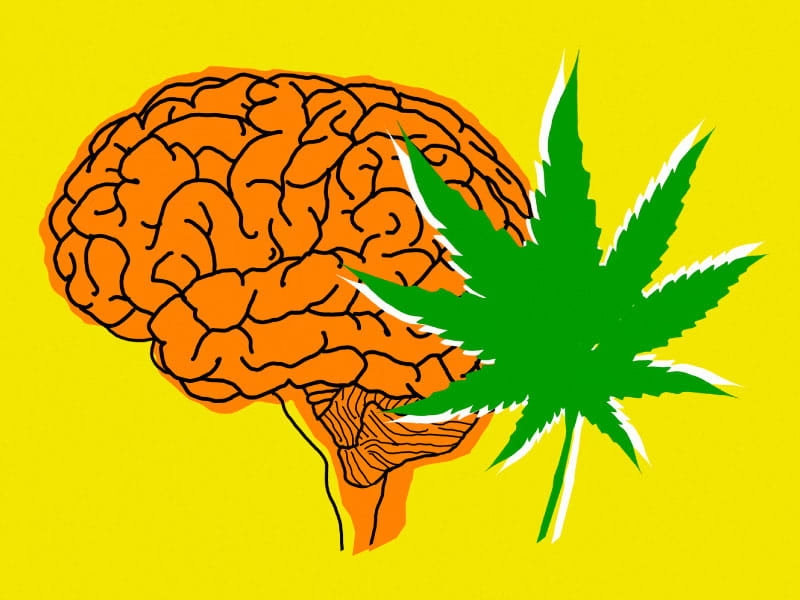Introduction
The discussion around marijuana as a treatment for ADHD has gained attention in recent years. With increasing legalization and research into the effects of cannabinoids on the brain, some individuals are exploring cannabis as a potential way to manage ADHD symptoms such as inattention, impulsivity, and hyperactivity.
But does the science support this? Can marijuana actually help — or does it create more problems than it solves?
This article examines the evidence, potential mechanisms, and risks of using marijuana for ADHD. It is intended for educational purposes only and should not replace professional medical advice.
1. Understanding ADHD and Its Symptoms
ADHD (Attention Deficit Hyperactivity Disorder), sometimes referred to as Attention Deficit Disorder (ADD), is a neurodevelopmental condition marked by challenges in sustaining attention, regulating impulses, and managing hyperactivity.
Common ADHD symptoms include:
- Difficulty focusing or sustaining attention
- Restlessness or constant movement (hyperactivity)
- Impulsivity and poor self-control
- Forgetfulness and distractibility
There are different types of ADHD, including:
- Inattentive ADHD: Trouble maintaining focus, often overlooked.
- Hyperactive-Impulsive ADHD: More obvious symptoms like fidgeting and impulsivity.
- Combined Type: A mix of inattentive and hyperactive symptoms.
These symptoms can affect academic performance, work productivity, relationships, and daily functioning.
2. Why Marijuana Is Being Considered for ADHD
With the growing acceptance of medical cannabis, some people with ADHD have turned to marijuana in hopes of easing symptoms like restlessness or racing thoughts.
Anecdotally, some adults report that marijuana helps them:
- Calm their minds and reduce hyperactivity
- Focus for longer periods
- Manage impulsivity
- Sleep better at night
This has led to increased interest in the endocannabinoid system, which plays a role in regulating mood, attention, and cognitive processes.
3. How Marijuana Interacts with the Brain
Marijuana contains compounds called cannabinoids, the most studied being THC (tetrahydrocannabinol) and CBD (cannabidiol). These interact with the brain’s cannabinoid receptors, mainly CB1 and CB2 receptors, which are part of the endocannabinoid system.
- THC binds strongly to CB1 receptors in the brain, producing psychoactive effects.
- CBD interacts more subtly and is not intoxicating.
Research suggests the endocannabinoid system may influence attention, emotion regulation, and executive function, all areas affected in ADHD. Theoretically, this could explain why some individuals feel temporary symptom relief after cannabis use.
4. What the Research Actually Says
Despite growing interest, clinical research on marijuana for ADHD is still limited and inconclusive. Here’s what current studies indicate:
- Small-scale surveys have found that some adults with ADHD use cannabis to self-medicate for restlessness, anxiety, or sleep problems.
- A 2017 study suggested that some people with ADHD reported improved focus and reduced impulsivity when using cannabis. However, these were self-reported effects, not controlled trials.
- A 2019 systematic review found insufficient evidence to recommend cannabis as an effective treatment for ADHD, citing limited sample sizes and inconsistent methodologies.
- Some studies indicate potential negative outcomes — especially for young people — including worsened memory, reduced motivation, and impaired attention.
In short, while some individuals perceive benefits, the scientific community has not confirmed marijuana as a safe or effective ADHD treatment.
5. Potential Risks and ADHD Effects
Marijuana can affect attention, memory, and executive functioning — the very skills that individuals with ADHD often struggle with.
Potential negative ADHD effects of marijuana use may include:
- Worsened focus or motivation over time
- Increased anxiety or paranoia in some individuals
- Potential interference with brain development in adolescents
- Risk of dependency with frequent use
For children and teens, marijuana use has been linked to poorer academic outcomes and cognitive issues, making it particularly concerning in younger age groups.
6. Medical Marijuana vs Recreational Use
It’s important to differentiate between medical marijuana, prescribed under a doctor’s supervision, and recreational cannabis use.
Medical marijuana programs sometimes allow cannabis use for conditions like chronic pain or anxiety. For ADHD, however, most medical boards and associations do not list it as an approved treatment, due to insufficient evidence.
Some individuals may experiment with high-CBD, low-THC products, seeking calming effects without intoxication. Still, dosing, formulation, and safety data are not standardized.
7. Alternative Evidence-Based ADHD Treatments
Currently, the most effective ADHD treatments are:
- Behavioral therapy and coaching
- Stimulant and non-stimulant medications, prescribed by healthcare providers
- Structured routines, sleep, exercise, and nutrition
These approaches have decades of research supporting their effectiveness. If someone is curious about cannabis, they should always consult a medical professional, ideally one familiar with ADHD and cannabinoid medicine.
Conclusion
While some individuals report short-term relief from ADHD symptoms through marijuana use, current research does not support cannabis as a proven ADHD treatment. The interaction between cannabinoid receptors and attention systems is complex and not fully understood.
If you’re considering marijuana for ADHD, it’s essential to do so under medical supervision, be aware of the risks, and rely on evidence-based treatments as your primary approach.
